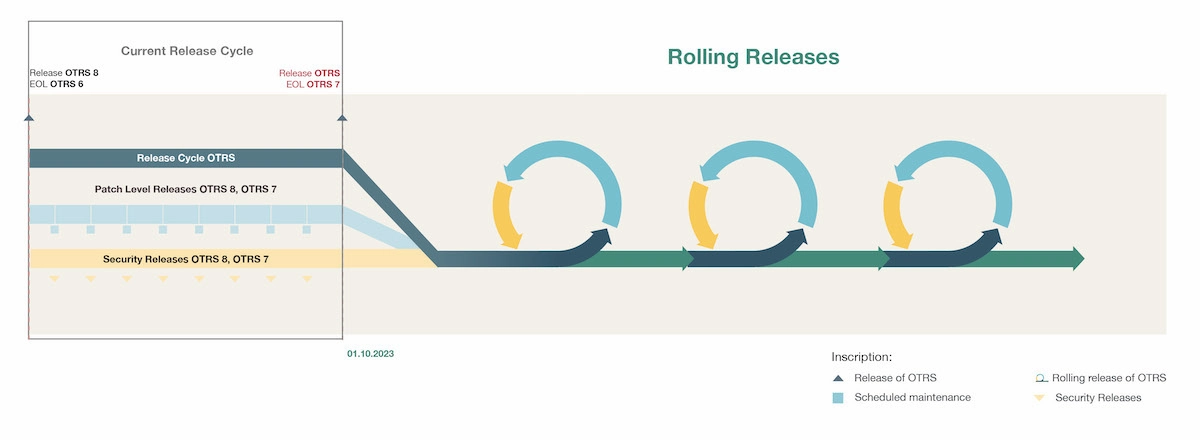Roadmap
- PlatformThe "Platform" provides a flexible infrastructure that can be configured to support a wide range of solutions and use cases. It is a scalable, generic solution that meets the need of any business use case. The platform supports multi-tenancy, namespaces for use-case separation, a use-case agnostic frontend, and can operate in multiple geolocated data centers or on-premises. It also offers centralized tenant management, licensing, reporting, and IAM. Moreover, it provides translation in multiple stages, automated deployment for both managed and on-premises environments, and automated release for efficient software distribution.
Description
The Centralized Tenant Management solution is a core component of the platform’s infrastructure, responsible for efficiently managing multiple tenants on the same platform.
- NOWBasic Multitenancy Management Functions with Tenant Service
Benefits for business- Efficient tenant and licensing management.
- Market value enhancement through modern and legacy system integration.
- Competitive edge through optimized operations and strategic insights.
Benefits for customers- Accurate and consistent tenant data across instances.
Stakeholders- System Administrators
- IT Managers
- Development Teams
Description
The Centralized Licensing Management is a core component of the platform’s infrastructure, responsible for efficiently managing multiple licenses.
- FUTURELicensing Mechanism Enhancement for Centralized Tenant Management
Benefits for business- Efficient tenant and licensing management.
- Market value enhancement through modern and legacy system integration.
- Competitive edge through optimized operations and strategic insights.
Benefits for customers- Seamless licensing process with online and offline options.
- Accurate and consistent tenant data across instances.
Stakeholders- System Administrators
- IT Managers
- Development Teams
Description
This use case focuses on developing a sophisticated Central Reporting system within the “Strategic” platform, designed to aggregate and analyze data related to tenant usage and on-premises activities. This innovative approach aims to provide comprehensive insights into customer interactions and system performance, driving strategic decisions and enhancing operational efficiencies.
- FUTURETelemetry Data Collection and Analysis
Benefits for business- Strategic decision
- making based on comprehensive data analysis.
- Improved understanding of customer behavior and system usage patterns.
Benefits for customers- Enhanced visibility into user behavior and system performance.
- Data
- driven insights to improve user experience and operational efficiency.
Stakeholders- Platform Administrators
- Data Analysts
- IT Teams
- Business Strategy Teams
Description
The “Centralized Authentication” use case involves implementing a centralized authentication mechanism to provide secure access to various components and services within the system. It aims to enhance security, streamline user access management, and provide a seamless authentication experience for end users.
- NOWDevelopment of Centralized Authentication Service
- FUTUREIntegration of Central Authentication into OTRS
Benefits for business- Improved security posture through standardized authentication practices.
- Reduced complexity in managing user access across various components.
- Enhanced user experience through seamless authentication processes.
Benefits for customers- Single sign
- on experience across different system components.
- Enhanced security through centralized and standardized authentication.
Stakeholders- End Users
- System Administrators
Description
The “Use-Case Agnostic Frontend” use case involves the development and deployment of a frontend interface that is independent of specific use cases. This frontend provides a consistent and customizable user experience across various solutions and use cases.
- NOWClient Library
Benefits for business- Reduced development effort for frontend interfaces across multiple solutions.
- Enhanced user satisfaction and retention due to consistent design.
Benefits for customers- Consistent and familiar user experience across different solutions.
- Streamlined user interactions due to a unified interface.
Stakeholders- Frontend Developers
- UI/UX Designers
- Solution Providers
- End Users
Description
The “Scaling Platform” use case focuses on designing and implementing a platform architecture that can accommodate increasing workloads and growing user bases. The goal is to ensure that the platform remains performant, reliable, and responsive as the demand for its services expands.
- NOWSysconfig/ACL/Process Deployment in Container
- NOWCaching Service
- NOWSearch Service (ElasticSearch)
- NOWSQL Service
- NOWMailing Service
- NOWBackup Service
- FUTUREMonitoring Service
Benefits for business- Enhanced user satisfaction and retention due to uninterrupted services.
- Accommodation of growing user bases and workloads without compromising performance.
Benefits for customers- Consistently responsive platform performance, even during high traffic periods.
Stakeholders- Platform Administrators
- DevOps Engineers
- End Users
- IT Service ManagementITSM is a structured approach to designing, delivering, managing, and improving IT services. The purpose is to align IT services with business needs and deliver value. ITIL v3 and ITIL 4 provide comprehensive frameworks for implementing ITSM.
Description
The “Incident Management” use case in the “IT Service Management” solution aims to handle and resolve incidents related to IT services, ensuring minimal disruption and prompt restoration of normal service operations.
- NOWDocument Search for Incident Management
Benefits for business- Improved service quality
- Efficient incident resolution
Benefits for customers- Reduced service downtime
- Enhanced communication during incidents
Stakeholders- Service desk agents
- Incident responders
- Service users
Release Cycle

Rolling Releases
Künftig wird es für unsere Software-Lösungen keine großen Major Releases in Form neuer Versionen geben. Stattdessen werden häufigere, kleinere Updates OTRS auf dem neuesten Stand halten. Die Entwicklung aller OTRS Lösungen wird als Rolling Release fortgesetzt. Die bisher aktuelle Version OTRS 8 wurde zu OTRS. So können Kunden- und Marktanforderungen künftig noch früher erkannt werden und schneller in die Produktentwicklung einfließen. Kunden profitieren von einer jederzeit aktuellen Software.
Im Rolling Release Cycle sind die bisherigen sogenannten Patch Level Releases*, also geplante Wartungen und Security Releases** enthalten.
*Patch Level Release
Ein Patch Level Release wird genutzt, um die Qualität und Stabilität unserer Software-Lösungen zu verbessern. Es enthält kritische und unkritische Aktualisierungen. Darüber hinaus können Verbesserungen der Sicherheit sowie notwendige Anpassungen zur Unterstützung neuer Software- und Hardware-Technologien aufgenommen werden.
**Security Release
Ein Security Release wird genutzt, um kritische Sicherheitsprobleme in unserer Software zu beheben.
